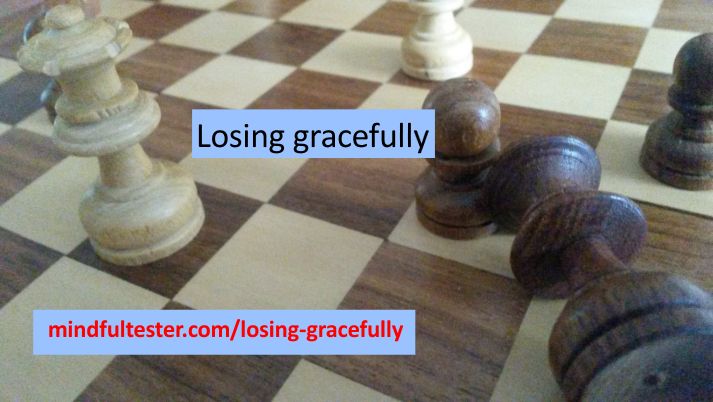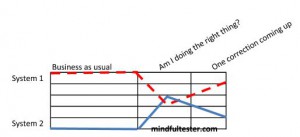“Han Toan, something has to be tested.”
I got a short briefing, csv files and decent specifications. A senior tester and I had to test an interface. He started sprinting: opening a csv file and logging bugs. I froze. No time for writing test cases and reviewing them. I confessed to the tester, that I was uncomfortable with the situation. I tested a csv file, but I was losing gracefully.
Theory and practice revisited
The following text is translation of a text I found in a Dutch farm:
“Theory is: if one knows everything and nothing is right.
Practice is: if everything functions and nobody knows why.
In this company theory and practice are combined.
Nothing is right and nobody knows why.”
Learning to win
One evening I was playing Skip-Bo with my wife. My plan was to lose gracefully. So I forced myself to play the wrong cards. Her position in the game improved gradually. She was happy, so was I.
After a while I was holding too many good cards in my hand. There was no way, that I could hide them for long. I would either win or lose awkwardly. The last option was worse than the first one.
In the months after this clumsy situation I tried to repeat the steps during other games. What was the first wrong move I made? What were my following strange steps? Based on my observations I was able to extract a single rule to win or heuristic.
I think, that I might be able to find scientific evidence for my heuristic. But I chose not to, because it worked. That was my goal.
No log in required
During an afternoon session James Bach told about testing without scripts. He was in a hotel lobby and saw a computer. He described the techniques and heuristics he used to get access to this computer. At the end he succeeded.
I was in the library. Killing my time with browsing newspaper articles. But that was not exciting after a while. I had an appointment within half an hour. In the meantime there should be something to be tested. I was still staring at the computer, when I remembered the story of James.
The computer environment had 2 access levels for normal users. A guest could use only basic functions, which were also limited. I did not have a library subscription, which would grant me a time slot to use standard office software and the browser. I could buy a time slot, but that would lower the challenge.
So I started testing the applications. There were many search engines for news and books. Then I noticed, that I could open the browser. It did not take me much time to go the download area. A document with Resume in the title drew my attention. I expected an error message, when I would attempt to open the file.
Then I actually opened the file. I had access to Word. And to personal data like name, address, birth day, …. I got more information than I had anticipated.
It was time to inform the information desk about this particular situation. One of the women acted adequately:
“Did you log in?”
“No. I did not log in.”
One brief look on the computer screen made her check the other computers in the library. She asked me the steps to reproduce the error. After my answer she continued with:
“After logging out the cache should be cleared. I’ll contact the system administrator about this situation. ”
I went back to the computer, which still showed the resume. I closed it. Then I noticed, that a pdf reader had been installed on the PC. One of the recently opened files contained passport in the name. One click gave me a high resolution full colour scan of a passport including social security number and picture of a fellow citizen.
I had made a little start. To explore in unknown environment. Without a script.





